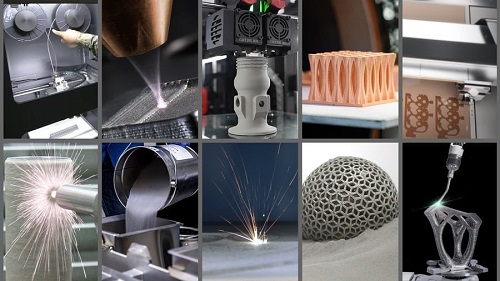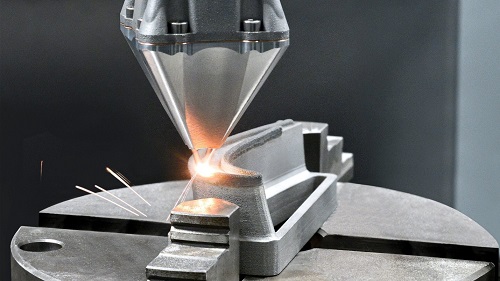The advent of multi-laser large-scale metal
3D printing technology has revolutionized the manufacturing landscape,
offering unprecedented precision and efficiency. This technology, which
utilizes multiple lasers to simultaneously melt and deposit metal powders, has
expanded the horizons of what is possible in various industries.
Multi-laser large-scale metal 3D printing
operates on the principle of additive manufacturing, where parts are built
layer by layer according to a 3D model. The use of multiple lasers allows
for a faster build rate and greater detail in the final product. This
technology is characterized by its ability to produce complex geometries that
would be unattainable with traditional manufacturing methods, as well as its
efficiency in reducing material waste.

1. Breaking
Traditional Manufacturing Limits
The breakthroughs achieved
in multi-laser large-scale 3D printing have shattered the limitations of
conventional manufacturing. Parts that were once considered too complex or
costly to produce can now be manufactured with ease and precision. This has
opened up new possibilities in design and engineering, enabling the creation of
lighter, stronger, and more durable products.
2. Efficient and
High-Precision Manufacturing
The efficiency gains from
this technology are significant. By reducing the time and resources needed for
production, companies can bring products to market faster and at a lower cost.
The high precision of the printing process also minimizes the need for
post-processing, further streamlining manufacturing.
1. Diverse
Applications
Multi-laser large-scale 3D
printing technology has found its place in a variety of sectors, including
aerospace, automotive, and medical. In aerospace, it is used to create
lightweight components for aircraft, enhancing fuel efficiency and performance.
In the automotive industry, it speeds up the prototyping process and enables
the production of customized parts. Medical applications range from custom
implants to the creation of complex surgical instruments.
With the promotion of
policies such as "Made in China 2025", China's 3D printing
technology has developed rapidly and been widely used. Chinese companies have
been able to produce high-performance, complex, large-scale metal load-bearing
components, playing an important role in high-end manufacturing fields such as
aerospace, automobile manufacturing, and biomedicine.
2. Transforming Global
Manufacturing
The impact of this technology
on the global manufacturing industry is profound. It is driving a
transformation towards more flexible, efficient, and sustainable manufacturing
processes. As countries and companies embrace this technology, we are
witnessing a significant upgrade in the capabilities and competitiveness of the
manufacturing sector. China's rapid progress in large-scale 3D printing and materials development
further reinforces this transformative trend.
1. Outstanding
Manufacturers and Products
The rise of multi-laser
large-scale 3D printing has given birth to a new breed of manufacturers that
specialize in this technology. These companies are not only producing
high-quality products but are also pushing the boundaries of what is possible
with each innovation.
2. International
Market Performance
The performance of these
manufacturers on the international stage has been impressive. They are not only
meeting but exceeding the expectations of a global clientele, showcasing the
potential of this technology to compete on a worldwide scale.

Future Development Trends of Multi-Laser
Large-Scale Metal 3D Printing Technology
1. Unexplored
Potential
As research continues, the
application potential of laser 3D printing is being further explored. New
industries are expected to adopt this technology, and existing applications
will become more sophisticated, driving innovation and growth.
2. Integration with
Advanced Manufacturing
The future will see a
greater integration of 3D printing with other advanced manufacturing
technologies, such as robotics and artificial intelligence. This will lead to
smarter, more automated production processes and the development of even more
advanced products.
1. Global Cooperation
The trend towards stronger
cooperation among enterprises across the global industrial chain is evident. By
working together, companies can leverage the collective knowledge and resources
to drive innovation and improve competitiveness. China's active participation in
international collaborations enhances the synergy within the industry and
fosters a conducive environment for technological advancement.
2. Formation of
Industrial Clusters
The formation of industrial
clusters centered around 3D printing technology is another key trend. These
clusters will foster a collaborative environment that enhances the overall
competitiveness of the industry. China's growing presence in the global 3D printing market contributes
to the formation of such clusters, facilitating knowledge exchange and
innovation within the industry.
As we
look to the future, the TCT Asia 2024 event is poised to be a landmark
gathering for industry professionals, showcasing the cutting edge of 3D
printing and additive manufacturing technologies. The event, scheduled to take
place from May 7th to 9th, 2024, at the National Exhibition and Convention
Center (Shanghai), is expected to be a hub of innovation and a platform for
exploring the latest advancements and future trends in this dynamic field.
Conclusion
The significant development achievements of
multi-laser large-scale metal 3D printing technology in recent years are a
testament to its transformative power.
To keep up with the latest updates and
announcements regarding TCT 2024, we encourage you to visit the official TCT
Asia website and follow our Facebook page.
By staying connected, you can ensure that you don't miss out on any exciting
developments leading up to the event. Join us in Shanghai for a truly inspiring
experience that will shape the future of 3D printing and additive
manufacturing.
Foot Notes
Join us at TCT Asia, connect with industry innovators as you explore the entire AM ecosystem including design, materials, hardware, software, post-processing, and quality. 10,000+ professionals will unite to hear about the latest trends, explore the latest immersive AM technologies and find solutions to their AM challenges. Make sure you are there too.

TCT ASIA 2024
Tuesday 7th May 09:00 - 17:30
Wednesday 8th May 09:00 - 17:30
Thursday 9th May 09:00 - 15:00
NECC(Shanghai)7.1&8.1H